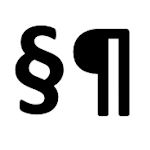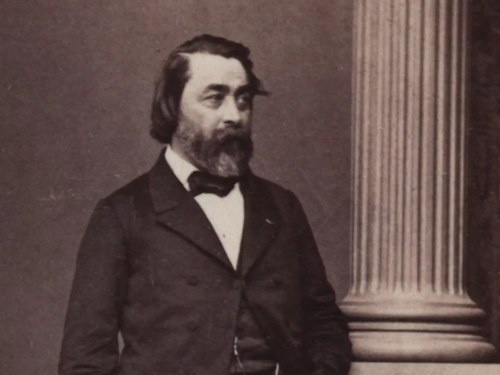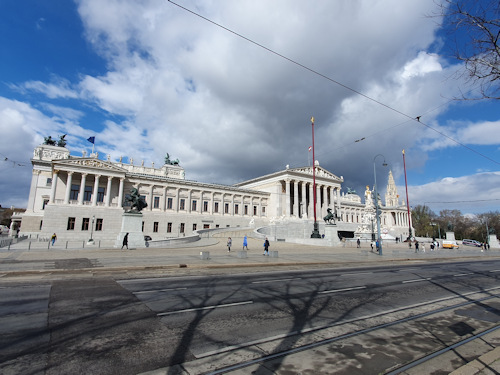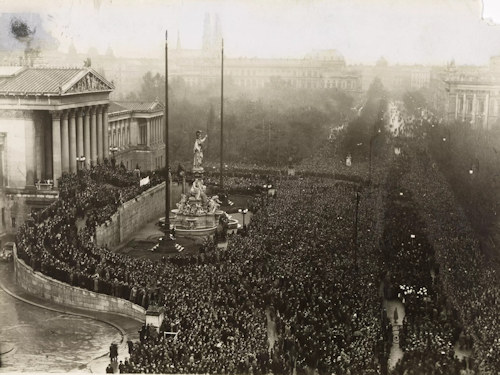
Should you wish to learn more about democracy in Austria and the rather magnificent 19th-century building at its heart, then take one of the tours of the parliament building.
- Informative, entertaining (and free!)
- Architectural tours in English run most days
- Prior registration required (easy online)
- Building recently reopened after extensive renovations
- Book a tour experience* for Vienna
- See also:
A journey through democracy

(The building at dusk)
The Austrian parliament takes its job as a servant of the people very seriously.
For example, you can turn up (after registering) and get a free tour of the newly-renovated parliament building in English that takes you from breathtaking historical rooms into the sleek modern national assembly.
So you can, for example, view rows of old oak desks where representatives from Bohemia threw bottles of ink at their colleagues from other lands of the Habsburg monarchy (and vice versa, lest we think the Bohemians were the only rowdy ones).
Or you can sit in seats otherwise occupied by Austria’s current MPs. And you may even park yourself where the presiding officer of today’s parliament normally governs proceedings.
The tour experience

(The original assembly room for MPs before a post-WWII rebuild, as photographed by Bruno Reiffenstein in 1905; Wien Museum Inv.-Nr. 184888; excerpt reproduced with permission under the terms of the CC0 licence)
Our tour began with a quick overview of the development of democracy in Austria (which had a few issues along the way that need no introduction here).
Then it was off to see the focal points of the building and its work as a democratic institution.
Architect Theophil Hansen (1813-1891) built the parliament back in the late 1800s to a Greek (and Roman) theme.
Expect to see Doric, Ionic and Corinthian columns, wall friezes, statues of Gods, Goddesses and figures from antiquity, and a fair few modern armchairs which might have caused Cicero to tighten his toga in surprise. (You’ll see Cicero, too.)

(Architect Theophil Hansen, who designed the building, around 1865; photo by Ludwig Angerer; Wien Museum Inv.-Nr. 213607; excerpt reproduced with permission under the terms of the CC0 licence)
Highlights include:
- The huge temple-like Säulenhalle with its 24 giant columns built of Salzburg marble.
- The magnificent Bundesversammlungssaal, pristine but unchanged from days of the monarchy (even down to cigar ashtrays built into the outside walls). Only used now for rare joint meetings of the upper and lower houses.
(Close your eyes and hear the echoes of delegates from across central Europe moaning about the Prussians.)
- The previous main entrance, where the top of the giant outside ramp meets the building. The walls bristle with the likes of Zeus and Hera, announcing your ascent into the hallowed halls of democracy.
- The Nationalratssaal, where the national assembly of MPs meets. WWII bombs saw this rebuilt in the style of the 1950s, now enhanced with modern fittings and technology of course.
(Sit in the seat of your favourite MP. Or go up to the raised platform and urge your fellow visitors to respect parliamentary procedure and cease with their bickering.)
- The Bundesratssaal, where the upper house sits, topped by giant bronze chandeliers and ceiling coats of arms from across Europe and the former empire.
Throughout the roughly one-hour tour, our guide explained what we were looking at and proved a fountain of expertise on Austrian politics and history. No question went unanswered.

(The building soon after the reopening following extensive refurbishment)
Combined with the opportunities presented by the visitor centre (see below), the tour offered considerable insight into the architecture of the building, but also its purpose, its history, and the wider workings of Austrian democracy.
As a side note, the accessibility of the insides to the public seems both astonishing and generous in the times we live in.
For example, we passed open doors on the tour beyond which the workings of parliament continued: people in dark suits conducting earnest conversations or facing a bank of microphones.
As such, what a marvellous opportunity to witness democracy and democratic history in one.
Tickets and visitor tips
The architectural tours of the main building in English run most days of the year. Rather kindly, there is no charge to join a tour. However, you do need to register in advance.
At the time of writing, this is the process…
- Visit parliament’s English-language tour page for individuals here and click on “Booking”
- Browse the listings for an English-language tour with a date and time that fits, then click on the register button. You’ll spot the English tours from the titles.
- Fill out the required information and add individuals under the accompanying person heading if there’s more than one of you
After registration, each participant gets a confirmation email and a QR code they need for the security check (print it out or show it on your phone) at the visitor entrance behind the fountain at the front.
Once through security (bring photo ID), go on into the ground floor visitor centre and pick up a lanyard from the info desk. They’ll also tell you where to wait for the guide.

(Proclamation of the “German-Austrian” republic in front of parliament on November 12th, 1918. The WWI Allies blocked the new state’s development in favour of what eventually became the first Republic of Austria; photo by Richard Hauffe; Wien Museum Inv.-Nr. 49342/13; excerpt reproduced with permission under the terms of the CC0 licence)
After the tour, take some time to experience additional publicly-accessible offerings within the visitor centre and elsewhere (all should have English versions and/or English subtitles).
Essentially, you get a democratic and history education delivered with verve and modern appeal. For example:
- Enjoy the interactive and audiovisual stations exploring the concept and practice of democracy in Austria
- View any special exhibitions (I saw a photo exhibition in the auditorium)
The back of the visitor centre leads through to a small café (where we enjoyed a lovely cheesecake and coffee) and the library and archive (also open to the public).
P.S. Parliament also offers a (rarer) English-language tour of the neighbouring late 19th-century Palais Epstein, which it also uses.
How to get there
See the bottom of the main article on parliament for travel tips.
Address: Dr.-Karl-Renner-Ring 3, 1017 Vienna